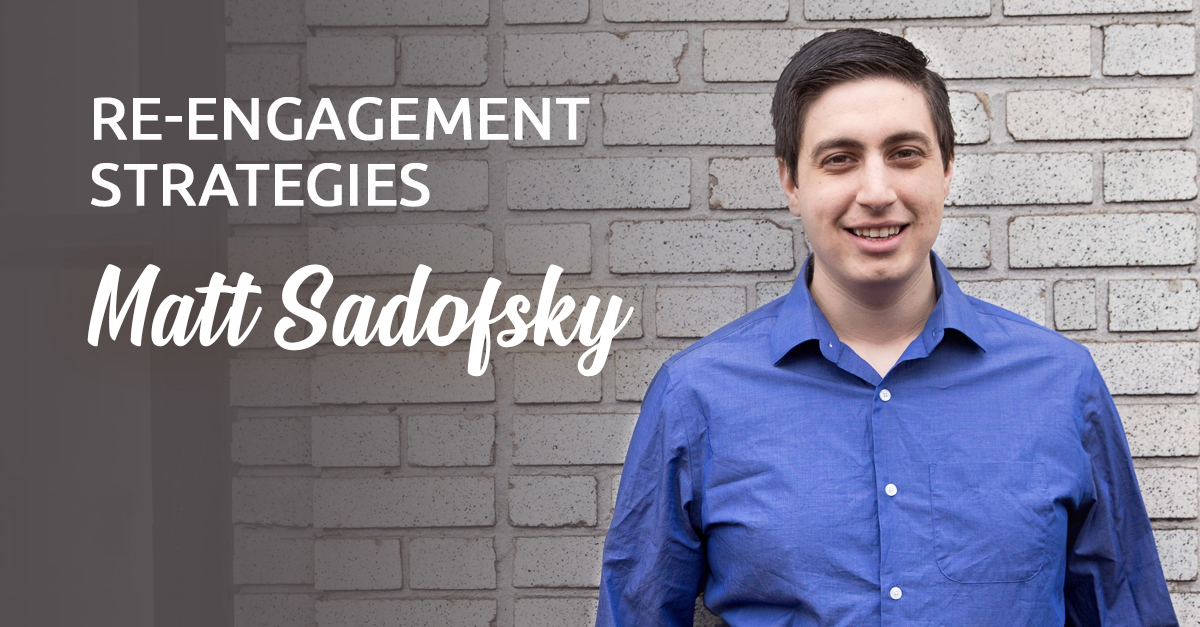Matt Sadofsky was formerly Chief Growth Officer & CMO at Studio, an app geared at putting boutique fitness classes in your pocket. Longtime friend to Liftoff, we’ve followed Matt’s career from the time he was featured as a Mobile Hero back when he managed digital marketing for a dating app, then moved on to marketing at Tilting Point and most recently Tidal, a high-definition subscription-based music, podcast and video streaming service.
Over the past few years, Matt has acquired some invaluable skills as a mobile app marketer. In this feature, Matt shares some mobile app re-engagement strategies he’s picked up along the way, in particular while at Tidal where he worked when this interview was conducted.
Why run re-engagement campaigns?
It really comes down to being able to make sure that all the users we spent a lot of money on acquiring stay in the ecosystem. Sometimes users don’t realize all the value from the product that they signed up for. After you’ve exhausted organic channels to re-engage users, paid media is the best way to do it.
What channels do you use to re-engage your users?
At Tidal, we started off on paid social—mostly Facebook ads and some Instagram as well—uploading device IDs that we could retarget that were in our high-quality, but churned group. Then over time we slowly started expanding out to DSPs. We currently use Remerge and Adikteev and have been looking at a couple other DSPs for some tests. We have been thinking about layering on different types of groups for retargeting over time—the one that we initially started with was people who installed the app but then never started a trial.
How do you approach audience segmentation?
At Tidal, there were four different key retargeting groups:
- The first group is ‘abandoned cart’. It seemed like the most logical place to start, and the easiest group to retarget.
- Afterwards we said, “Okay, what would be the next high-value touchpoint that it would be a little bit more difficult to achieve?” That was “winbacks”, or people that had been on a trial or had been a subscriber, but canceled. We then try to get them to come back and re-trial or go straight into a paid account.
- We’ve also started trying to upsell people through retargeting as well. So targeting people who are on our premium plan and trying to get them to go to high-fidelity (a different plan). We make twice as much on people that go to our high-fidelity plan, so it’s pretty easy to calculate the ROI on those campaigns.
- Lastly, we’re going to test some pre-loads through Digital Turbine, where we’re going to retarget users to remind them that they have Tidal pre-installed on their phone already.
What are the key A-events targeted for each audience segment, what are the KPIs for those events, and how are you calculating them?
For people who are pre-trial, we’re looking at trial start as our key event. For people that had already been on a trial, or were paid, we are looking at pad starts and paid renewals respectively as the key events. We try to always run incrementality testing with our partners, typically withholding about 5% of the total device IDs and measure what the organic baseline would be for those groups compared to what we’re getting from the paid media side.
How do you ensure accurate click-through attribution? What is your strategy for using blackout windows to not cannibalize your UA?
We have definitely cut back on the length of time that we allow for click and view-through attribution. My goal is to continue shrinking that click-through window over time because you might end up paying more on a CPA basis. The likelihood that what you’re paying for is truly incremental is going to increase, the lower your click-through window is. We don’t really use blackout windows at the moment.
What are some creative best practices for re-engagement?
What we’ve done is to take what performs best on the acquisitions side, from a messaging standpoint, and change the messaging in the creative to hit the pain points that the users churned on. If it’s more than just a reminder to start a trial it’s just a friendly nudge letting them know what some of the key benefits are.
It’s really about trying to find the right messaging for the right user. I think the next iteration going forward is tapping into some of the data that we have on what people are streaming and how people are engaging with the app and starting to surface creative, more relevant directly to the user. For example, if you streamed a lot of Ariana Grande, you get an Ariana Grande ad.
What impact, if any, have you seen on user acquisition since starting to run re-engagement?
We’ve seen the overall install-to-trial start rates increase by about 15% because we’re targeting all the people that installed and never started a trial. It comes at an incremental cost, but the incremental value backs out for us there, so overall it’s definitely helped our acquisition efforts quite a bit.
What are your top three tips for running re-engagement?
- Start small, and make sure that as you scale, scale up smartly.
- Run an incrementality test, because it’s really easy, especially if you have a large view-through or click-through attribution windows, to eat up all your organic and not measure true incremental growth.
- Make sure that your messaging is right for the users. You can’t just throw your generic UA creative up there. Figure out what the pain points are, why users churn and make sure that you have the right messaging to get them back into your app.
Read other insightful Q&As with leading mobile app marketers in the industry.
